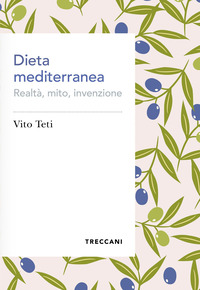Dieta mediterranea. Realtà, mito, invenzione
by Teti Vito
Despite intense competition, the Mediterranean diet shows no signs of falling from the podium of recommended dietary regimes for prolonged health and well-being. Since the 1950s, biologists, nutritionists and doctors have recommended a diet rich in cereals, legumes, fruit, vegetables, fish and pasta and low in animal products to combat the diseases inherent to industrial societies. But how accurate or mythologized is the story of a model that does not correspond to any precise historical and geographical reality of the Mediterranean region, given that even in the first half of the twentieth-century oil, wheat and wine – the so-called ‘Mediterranean trinity’ – entered society only through the kitchens of the rich? And is it correct to define ‘local’ and ‘traditional’ as that which – like that same ‘trinity’ – has come from afar, as well as the related elaborations that are the outcome and testimony of passages, meetings, and mixtures of different peoples and cultures?
- Publishing house Treccani
- Year of publication 2024
- Number of pages 144
- ISBN 9788812011346
- Foreign Rights rights@treccani.it
- Price 10.00
Teti Vito
Vito Teti, former professor of Cultural Anthropology at the University of Calabria, is considered one of the leading experts in the anthropology of food. His most recent works include: Il colore del cibo. Geografia, mito e realtà dell’alimentazione mediterranea(Meltemi, 2019), Prevedere l’imprevedibile. Presente, passato e futuro in tempo di coronavirus (Donzelli, 2020).






